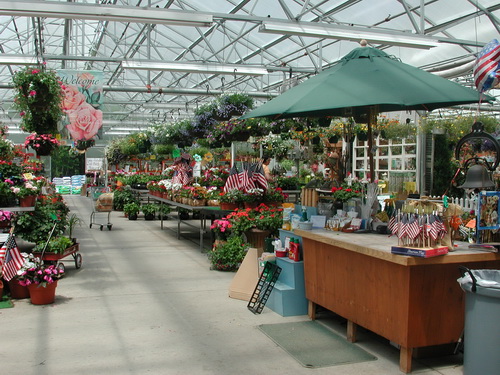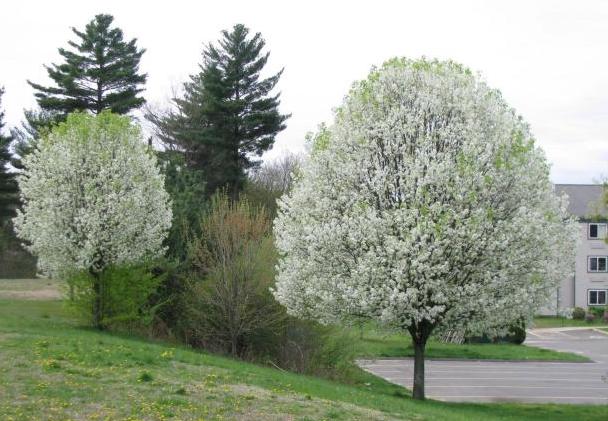Why Are We Buying Invasives?
by Nancy Miller, Fairfax Master Gardener
You need look no further than your local garden centers, respectable garden retailers, on-line or seasonal big-box retailers to purchase invasives. Sometimes they come free from your neighbor’s discarded house plants that have been tossed into the woods, or possibly from birds and mammals who leave their “debris” as they travel through your neighborhood. Sometimes your neighbors like the plant, and they don’t care if it’s invasive. Often the choice was made and planted by a landscape or lawn maintenance firm. Or maybe the plant was gorgeous, and you just didn’t check.
 I walked through my neighborhood in central Fairfax County and made a list of thirty plus plants that are quite prevalent, even though they appear on numerous invasive plant lists that are readily available to the public. My list included perennials, trees, grasses, shrubs and vines. None of them seem particularly exotic since they are so ubiquitous, but they are the epitome of the definition of invasives, as defined by Jennifer Gagnon in our July 2024 issue.
I walked through my neighborhood in central Fairfax County and made a list of thirty plus plants that are quite prevalent, even though they appear on numerous invasive plant lists that are readily available to the public. My list included perennials, trees, grasses, shrubs and vines. None of them seem particularly exotic since they are so ubiquitous, but they are the epitome of the definition of invasives, as defined by Jennifer Gagnon in our July 2024 issue.
While originally planning to physically visit various types of plant sellers, I realized that plants are sold seasonally. Just because there were no physical specimens present in late August after a hot, dry summer would be no indication of their availability in the correct planting season. To determine how available my sampling of plants might be, I searched local nurseries’ websites as well as on-line sites, mail-order specialty nurseries and seasonal big-box retailers. I used only the correct Latin nomenclature to avoid geographical confusion over names. My search began by searching generally, then narrowed to Fairfax County specifically. Every plant I searched for was available either locally or on-line, sometimes everywhere and sometimes only at a few retailers.

Invasive Callery Pear
While this finding was quite discouraging, there were signs that things may be improving. First, on every on-line listing for an invasive, below the list of sellers, there would be referrals to invasive plant information in the form of websites, frequently asked questions or sites like Earth Sangha (who only deals in natives). In addition, there were also site referrals to native alternatives. I wondered when, how and why this change had occurred.
In 2024, House Bill 1167 was passed by both chambers of the Virginia Assembly. Nicknamed “the English Ivy” bill, it would have allowed localities to prohibit the sale of English ivy and to collect civil penalties ranging from $50 to $3,000 over each 12-month period. The bill was opposed by the Virginia Agribusiness Council and the Virginia Nursery and Landscaping Association. The Governor vetoed the bill. Further consideration will not take place until the next session in January 2025.
Why does Virginia allow invasive species to be sold at all? They are allowed to be sold because of their profitability for the landscaping and nursery industries. Invasives and noxious weeds are handled quite differently in the Commonwealth. Both are equally destructive, but noxious weeds affect the agricultural industry. Which list a plant is on is determined by an exception in the state’s noxious weeds definition that says a species can’t be classified as a noxious weed if it is “commercially viable or commercially propagated in Virginia.”

Invasive English Ivy
In 2023, Virginia passed a compromise bill addressing the increasing threats of invasive species. It tried to improve coordination among state and federal agencies’ efforts regarding invasive species prevention and management and information exchange, and to educate the public on related matters. This bill set up a committee consisting of the Departments of Agriculture and Consumer Services, Conservation and Recreation, Environmental Quality, Forestry, Health, Transportation and Wildlife Resources. Also included are the Marine Resources Commission, the Virginia Cooperative Extension, the Virginia Institute of Marine Science, representatives of the agriculture and forestry industries, the conservation community, interested federal agencies, academic institutions and commercial interests. It is chaired by the Secretary of Natural and Historic Resources. It seems safe to say that all interested parties are included.
Among this committee’s duties are preventing introductions of additional invasives into the Commonwealth and procuring, using and maintaining native species to replace invasives. The most encouraging directive included in this bill is that the Secretaries of Natural and Historic Resources, Agriculture and Forestry, and Administration are to coordinate the development of strategic actions to be taken by state agencies to prioritize the use of native plant species.
We are seeing the implementation of this law now. Searching for “invasive plants” brings up countless opportunities to learn and volunteer. There are offerings of brochures and articles from state, federal and county agencies that are vetted for accuracy. There are numerous organizations, including state agencies, offering programs for citizens to join to help remove invasives. Growers are getting the message about offering greater quantities and varieties of natives to retailers for resale. Perhaps we are finally turning a corner. The emphasis on native plant species, coupled with continuing education about invasives, will bring a resurgence in our native wildlife populations and a healthier environment for all.
-
References
- Governor’s Veto of English Ivy Bill ‘Super Disappointing’, Northern Virginia Magazine, Colleen Kelleher, March 15, 2024.
- Invasive Plant Alternatives, Fairfax County Public Works and Environmental Services
- Invasive Species Management Plan, Virginia Law Information Service